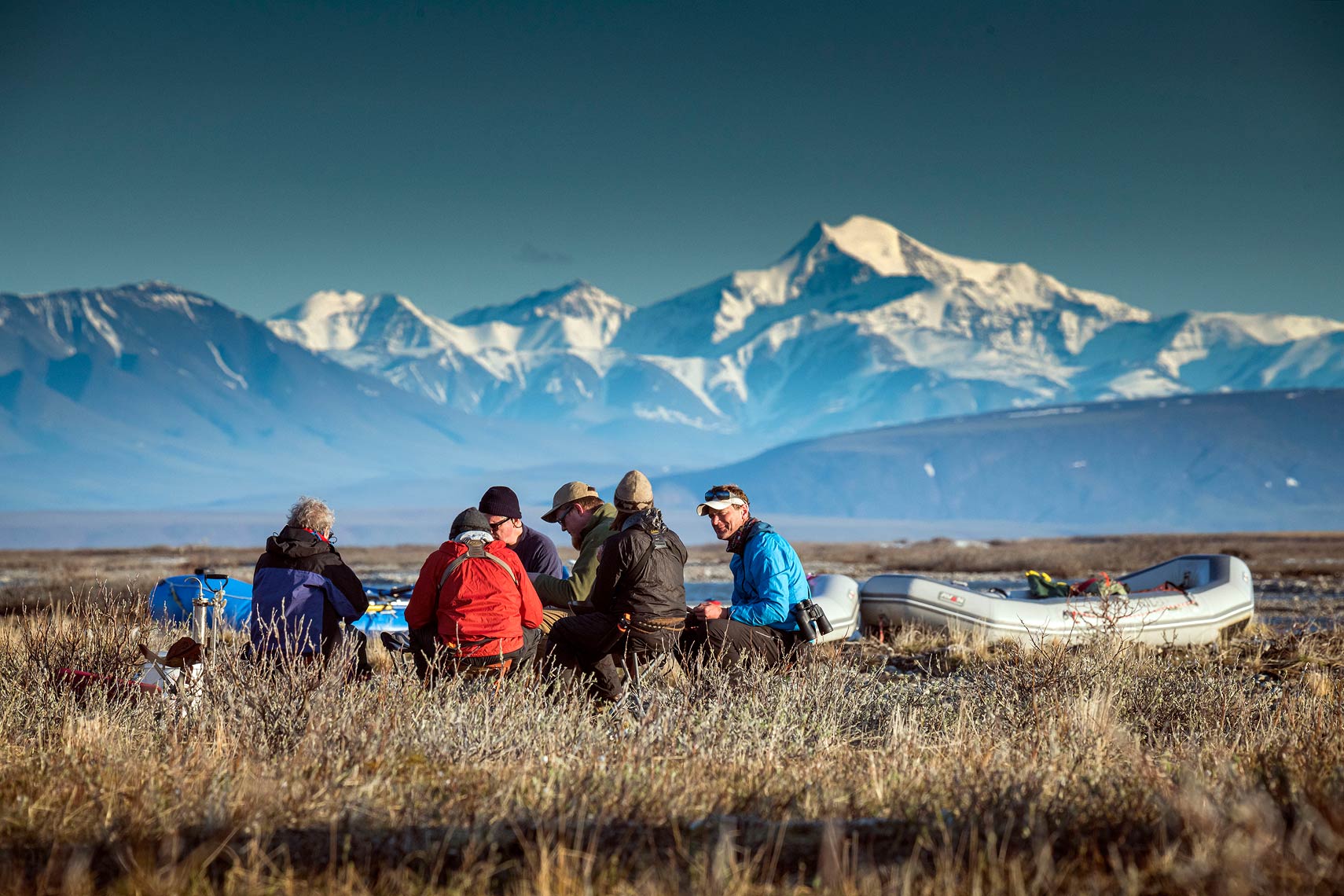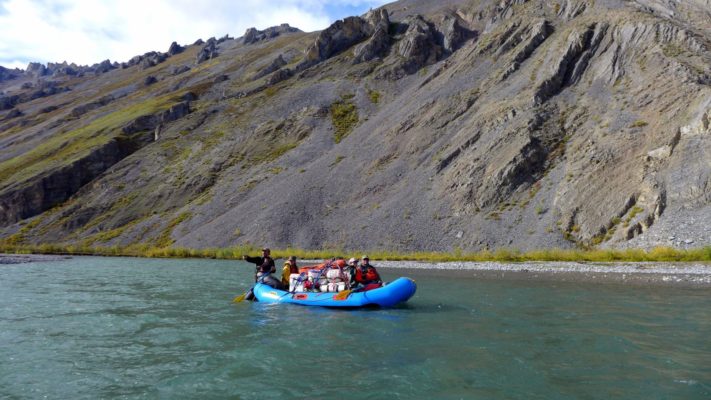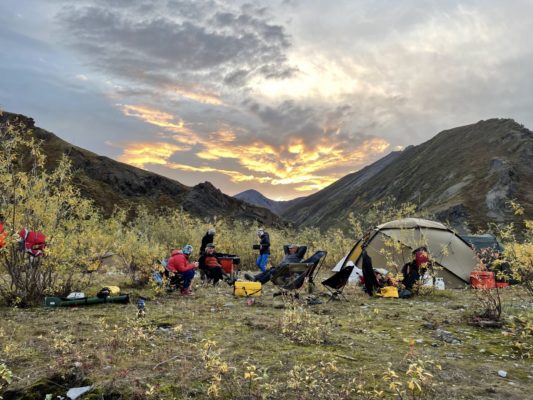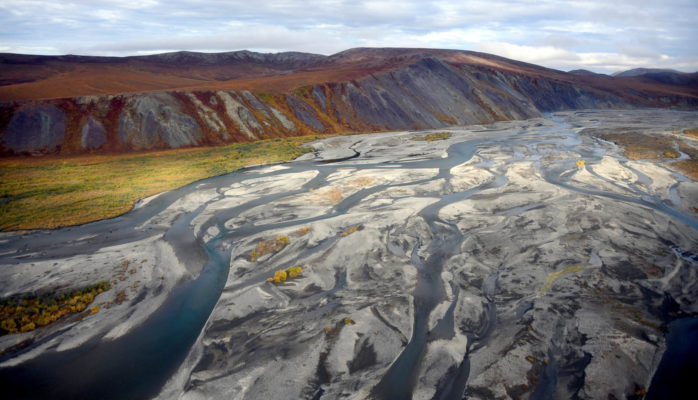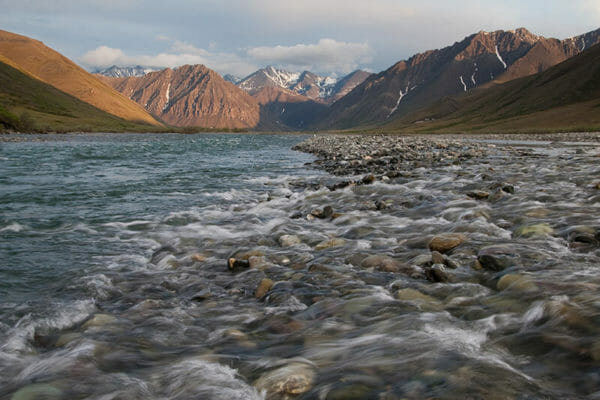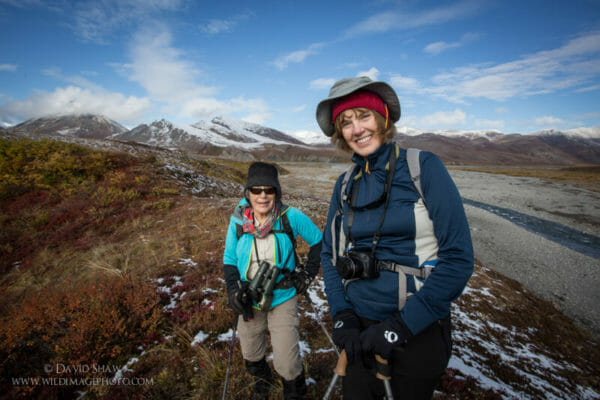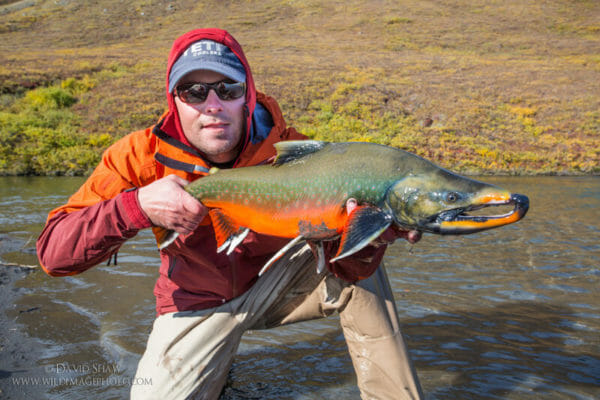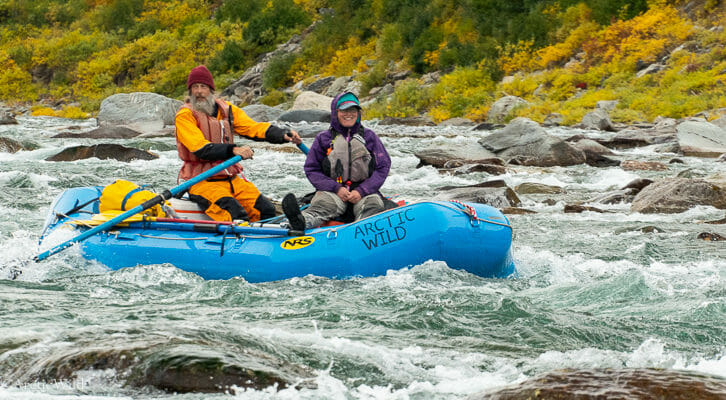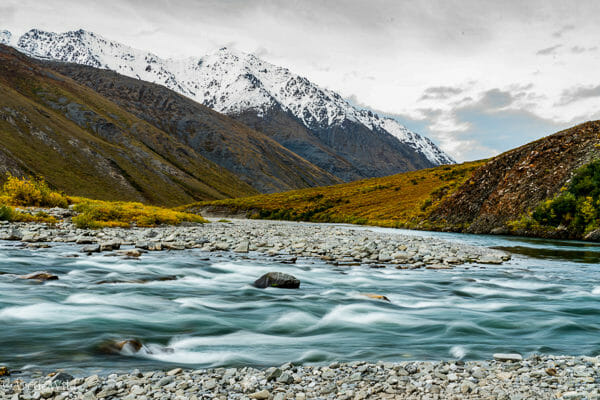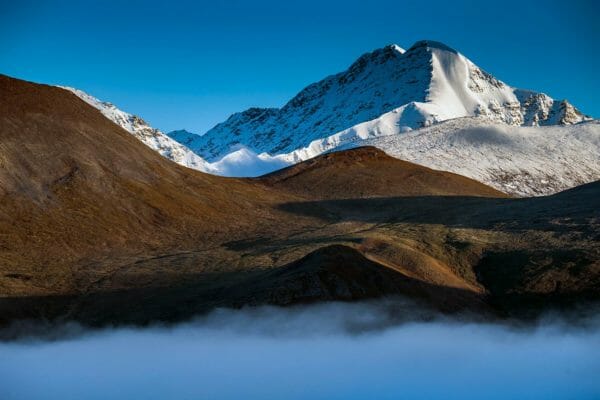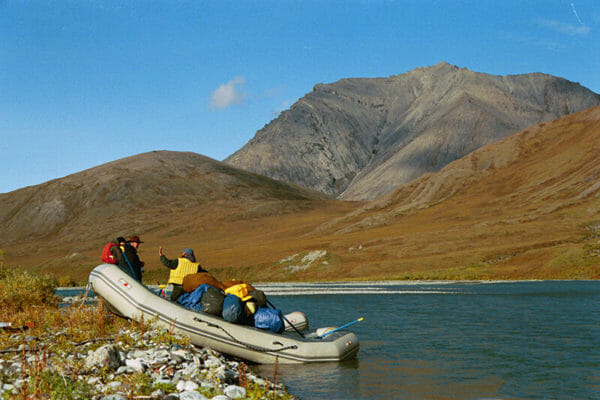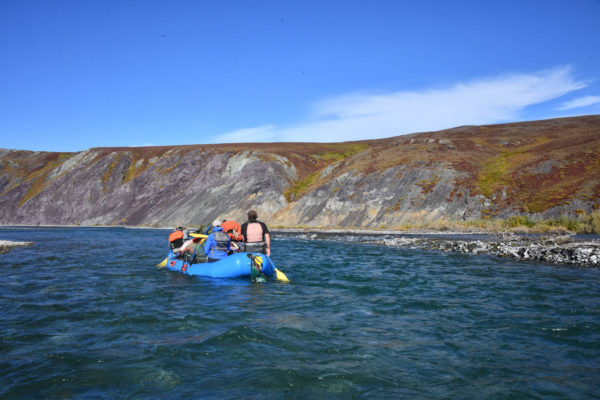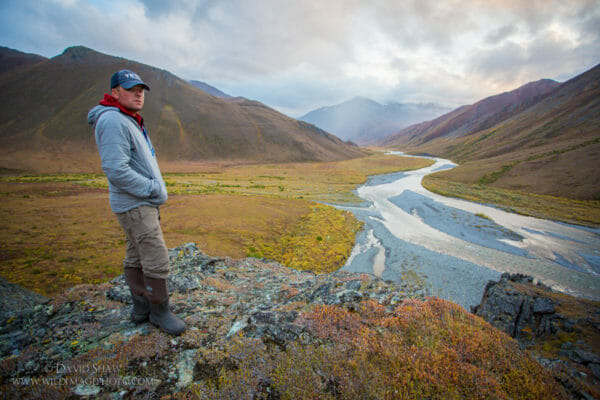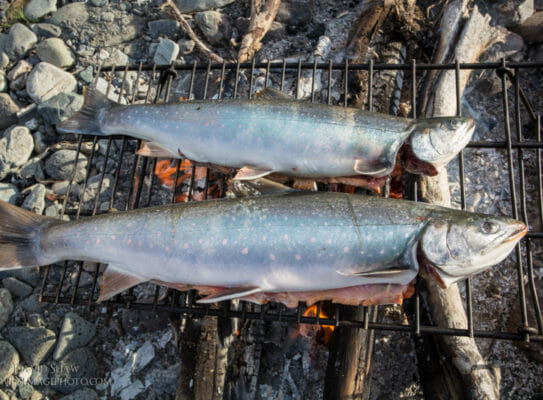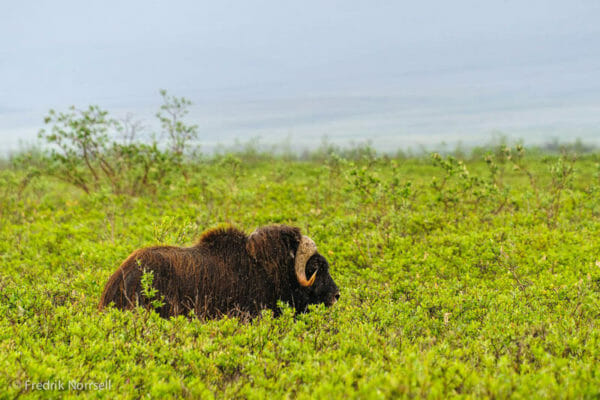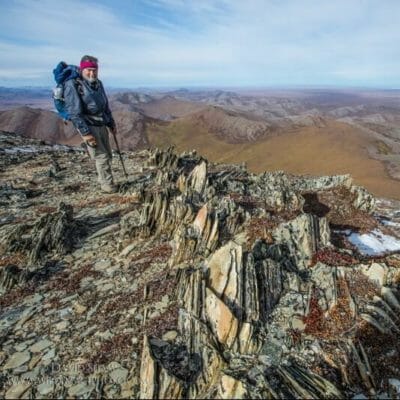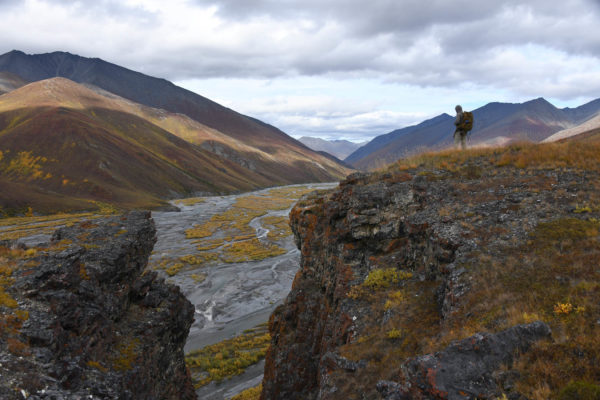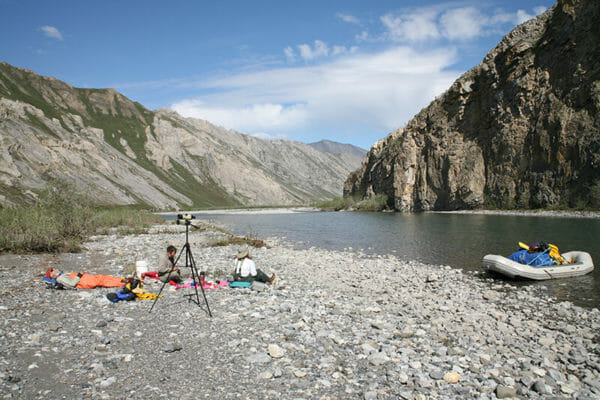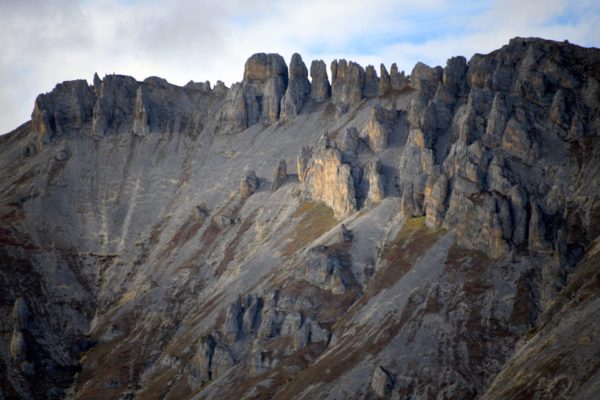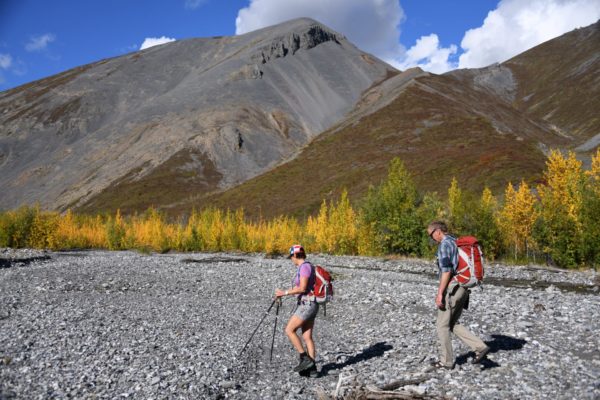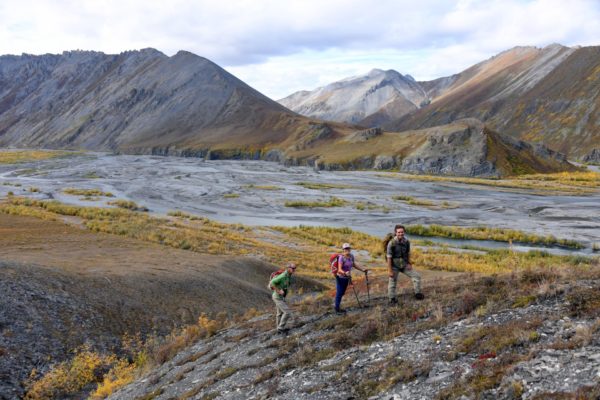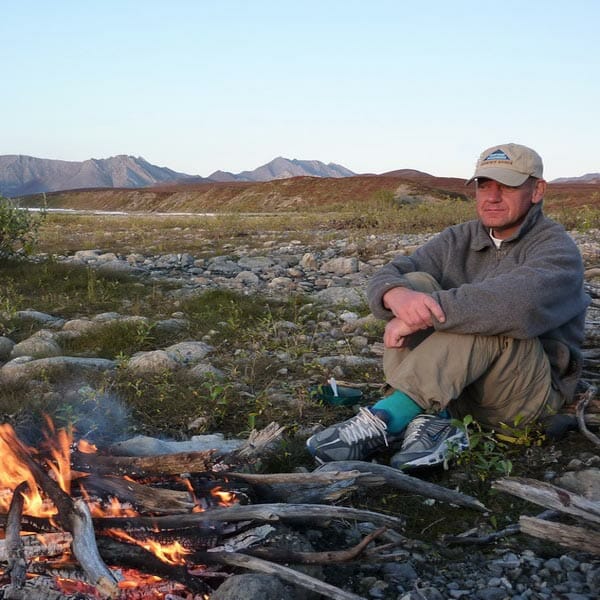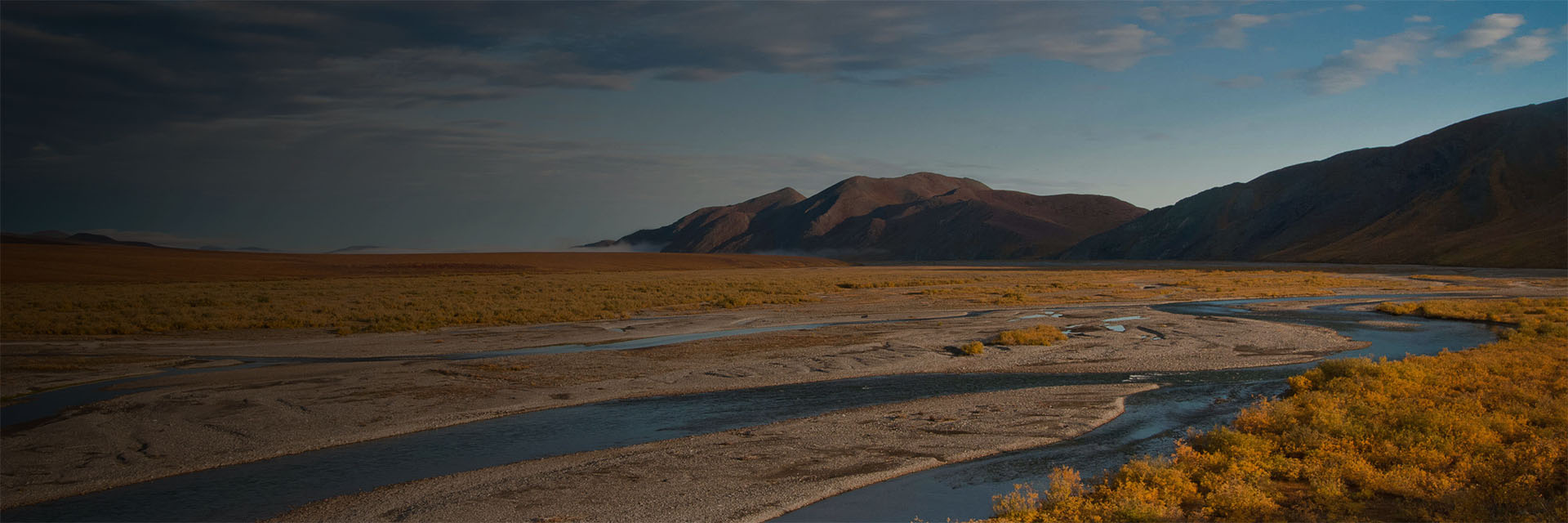Last updated: March 7, 2023
Itinerary
What follows is a general flow of events. Expect the unexpected and prepare to be flexible.
August 10
Pre-trip meeting with your guide in Fairbanks at 4pm at Arctic Wild headquarters.
August 11
Fly 200 miles north from Fairbanks, across the Yukon River and the Arctic Circle to the Gwich’in Athabascan settlement of Arctic Village. From there, we board an even smaller plane and carry on through the Brooks Range to a river bar alongside the Kongakut River. Tonight, take a hike, and settle into your surroundings.
August 12- 19
Once we inflate the rafts and give a safety briefing we will launch in to the swift cold water.
On paddling days we spend about five hours on the water. This will allow lots of time for exploration, photography and a delicious picnic lunch. We run fun Class III rapids on several different days, and this entire stretch of river is exciting to paddle.
On each of the three layover days, we have choices of easy or harder, longer, higher climbs. Just before the last day or the trip, we will be able to hike to a sweeping view of the arctic coast and see the Arctic Ocean stretching off to the curved horizon. The fishing is great from every single place we camp.
August 20
Weather permitting, our bush plane will arrive to fly us towards Fairbanks in time for a late dinner and warm shower.





